Altitude and Aspect
The vegetation of the main Drakensberg range, between the Amphitheatre in the north and Giant's Castle in the south, is determined mainly by altitude and aspect (orientation to the sun).
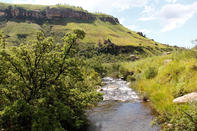
At higher altitudes the range of temperature extremes increases and the vegetation becomes shorter and hardier. Likewise, north-and east-facing slopes receive more sunshine than south-and west-facing ones, and this too influences plant development. Forests are more prevalent on the cooler slopes and in the damp, shady gorges, while Protea savannah occurs at the same altitude but on the slopes receiving more sunshine.
Three Main Vegetation Belts
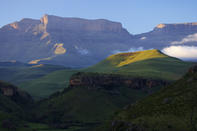
Profusion of Species
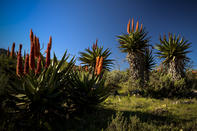
Botanically the mountain region is the most diverse. The profusion of species in the indigenous forests reads like a shopping list of the Great Gardener: apart from the predominant real and Henkel's yellowwoods, common trees of the mountain forests are Cape chestnut, wild peach, mountain saffron, assegai tree and Cape beech, as well as others whose names speak of their diversity and beauty.
Fire has had considerable influence on the Drakensberg's vegetation and the larger, exposed trees are most vulnerable. Grasses are better equipped to survive the ravages of veld fires as their growing points are at ground level. Fire, therefore, has tended to maintain the extensive grasslands while checking the advance of woody plants and besieging the trees and tall bushes in protected areas.
Exposed Slopes of the Sub-Alpine Region
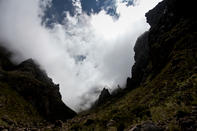
In the sub-alpine belt of the Drakensberg, which is regularly subjected to fire, certain woody plants such as the mountain cedar and the erica-like Philippia evansii have managed to re-establish themselves only after a period of more than 20 years undisturbed by fire. In previous times they and the forests probably covered a far greater area than they do today. The most common species of the Protea savannah are Protea multibracteata and P. roupelliae.
Higher up on the more exposed slopes grows the gnarled Protea dracomontana, its long underground rootstock making it the hardiest of a generally fire-resistant group. The exposed slopes of the Sub-Alpine Region are covered mostly with the reddish Themeda and Festuca grasses, while sites protected from fire support the leggy, multi-stemmed, hard-leafed vegetation known as sclerophyllous thicket, or in the Cape, 'fynbos'. The berg cycad also occurs in this area.
True Alpine Heath
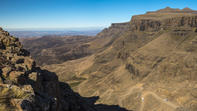
On the highest areas of Lesotho and the Drakensberg, above 2 860 metres, there is a true alpine heath where plants do not exceed one metre in height.
Various helichrysums and ericas dominate the bland alpine heaths of the summits, interspersed with grasses such as Festuca, Merxmuellera and tufts of the unpalatable Aristida, but in spring moraea blooms and the iridescent sunbirds that flitter around the fire bursts of red-hot pokers (Kniphofia spp.) add splashes of colour along the stream banks, while everlastings (Helichrysum spp.) liven up the drab, weather-stunted heaths.
In Southern Africa only the Amatola Mountains of the Eastern Cape, the high Lesotho plateau, the Drakensberg summit and a few isolated high peaks like the Kompasberg in the Sneeuberg mountains accommodate a Sub-Alpine or Alpine flora.